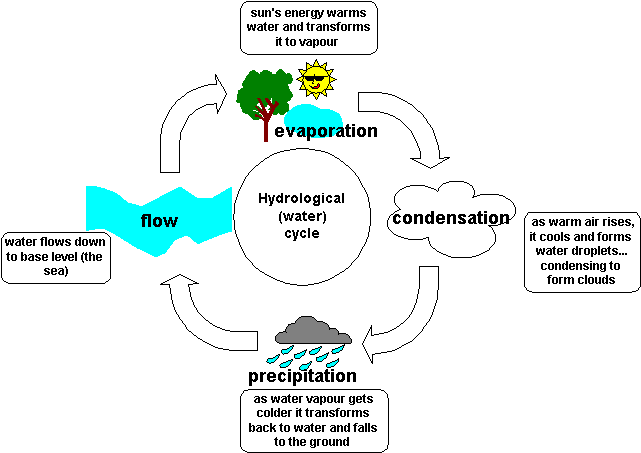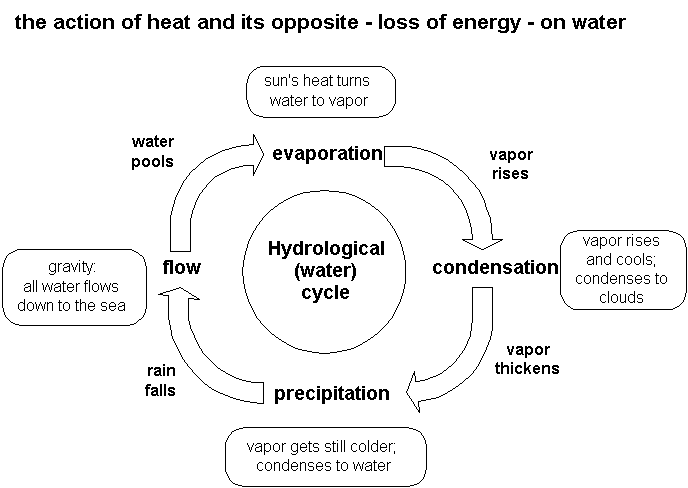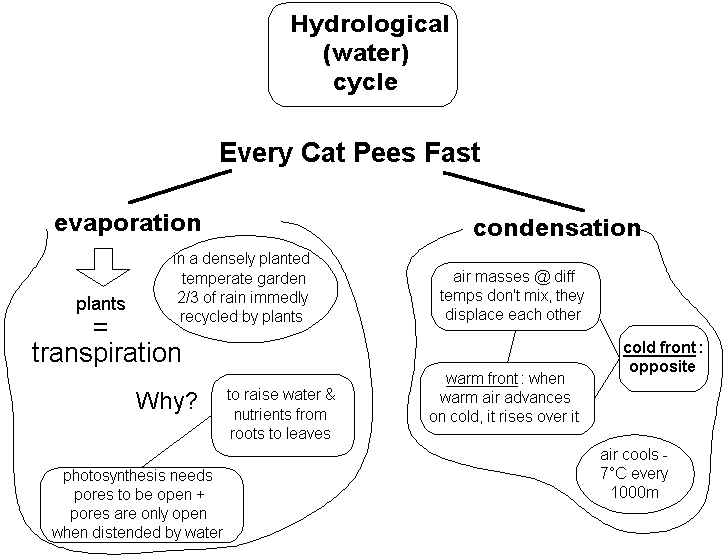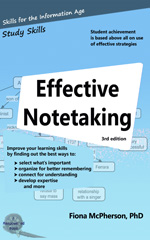What makes good notes? To know this, we need to know what note-taking is really about.
Most people think its about recording information, and certainly that is part of its function — but the main value of note-taking as a strategy for remembering information lies elsewhere:
Note-taking is a strategy for making information meaningful.
Here are some notes on the water cycle:
Hydrological (water) cycle
Precipitation & flow: “whether they are typhoons or Scotch mists, mountain torrents or field ditches or city sewers, they are simply water sinking back to base level, the sea.”
Evaporation = the act of passively presenting water to the atmosphere to be soaked up + vaporized by the sun’s energy.
Transpiration= evaporation thru plants
plant draws water from grd thru roots up to open-pored vessels in leaves, from which it is vaporized.
Condensation: as warm air rises it cools -7C every 1000m until it can’t hold it’s cargo of water vapor any longer condenses into clouds, which cool further, condensing further into rain drops.
warm front: when warm air advances on cold it rises over it.
cold front: when cold air advances on warm + forces it to rise.
In this example, the notes are neat and tidy, with headings and indentations showing a degree of organization. Terms are defined. The notes appear to encapsulate the main ideas. A few abbreviations are used. So far so good — these are all widely cited recommendations for effective note-taking.
Here's a different approach.

(If you click on the links at the bottom, you'll be able to see better images.)
This one’s a picture. What is called in the trade a multimedia summary: a concise summary combining words and pictures. This has an advantage over the first example in that we can actually see the cycle, we can see the connection between the elements of the water cycle.
In the first example (a topical summary), we had the main points, but it didn’t go beyond the information presented in the text. Similarly, the above example (a multimedia summary), shows more connection but less detail, but also doesn’t go beyond the points given.
Now look at this one

There’s no more detail in this one, but it not only connects the ideas, it has taken the information another step. To the principle beneath the connection. To a higher level of abstraction.
You may think of summarizing strategies in terms of a matrix weighing amount of detail against degree of abstraction:
|
|
|
Degree of Abstraction / “Depth” |
|
|
|
|
High |
Low |
Amount of |
High |
Best |
Poor |
Detail |
Low |
Rather vacuous |
Really bad |
The best type of summary is one that combines a high degree of abstraction with a high amount of detail. Our third water cycle example has a high level of abstraction but little detail — rather vacuous.

This one has the details. It also has a mnemonic, to help prompt my memory for the elements of the cycle and remember their order. This information could equally well have been presented in a linear format.
Together, these two examples combine detail and abstraction to form an effective summary.
